Corsair Neutron XT (240GB, 480GB & 960GB) SSD Review: Phison S10 Debuts
by Kristian Vättö on November 17, 2014 9:00 AM ESTRandom Read/Write Speed
The four corners of SSD performance are as follows: random read, random write, sequential read and sequential write speed. Random accesses are generally small in size, while sequential accesses tend to be larger and thus we have the four Iometer tests we use in all of our reviews.
Our first test writes 4KB in a completely random pattern over an 8GB space of the drive to simulate the sort of random access that you'd see on an OS drive (even this is more stressful than a normal desktop user would see). We perform three concurrent IOs and run the test for 3 minutes. The results reported are in average MB/s over the entire time.
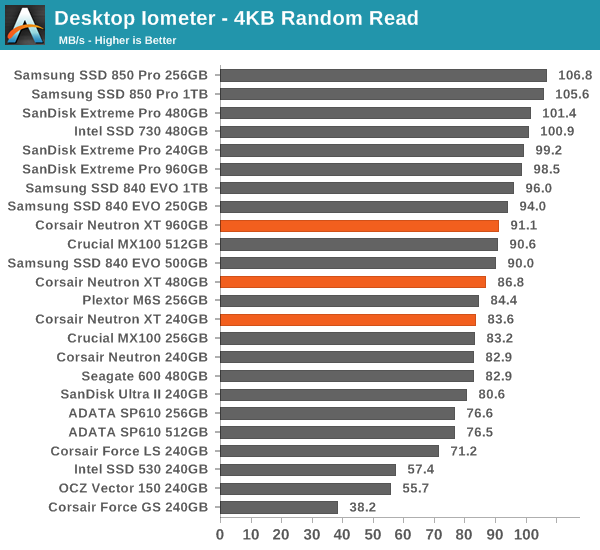
Random read speed gets a boost compared to the Force LS and the Phison finally appears to be on-par with the others.
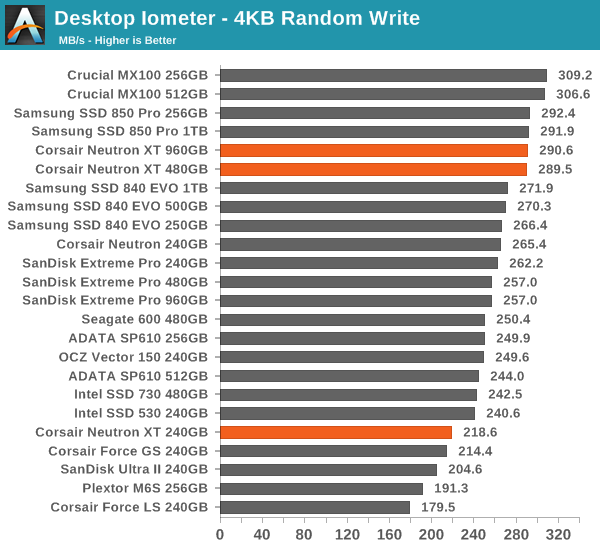
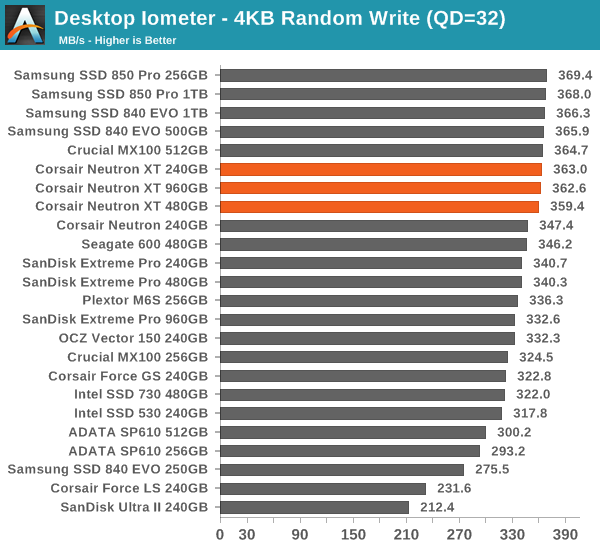
Random write speed is also good, although the 240GB model could perform better at lower queue depths.
Sequential Read/Write Speed
To measure sequential performance we run a 1 minute long 128KB sequential test over the entire span of the drive at a queue depth of 1. The results reported are in average MB/s over the entire test length.
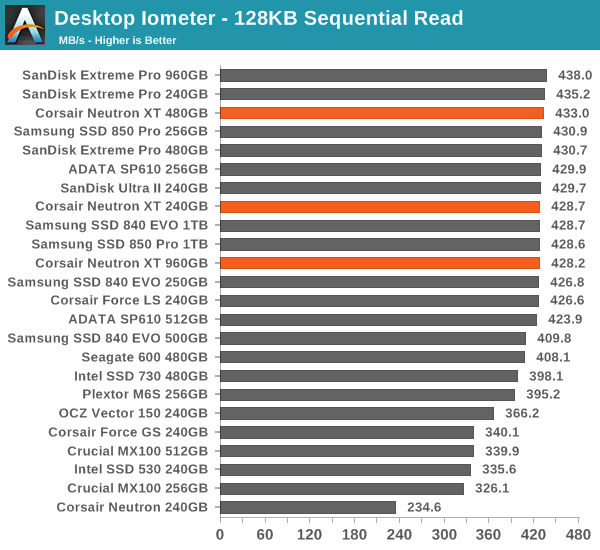
Here we see the performance drop when the capacity increases again. The 960GB model is quite noticeably slower in write speed compared to the rest of the capacities, although at 355MB/s it definitely isn't slow.

AS-SSD Incompressible Sequential Read/Write Performance
The AS-SSD sequential benchmark uses incompressible data for all of its transfers. The result is a pretty big reduction in sequential write speed on SandForce based controllers, but most other controllers are unaffected.
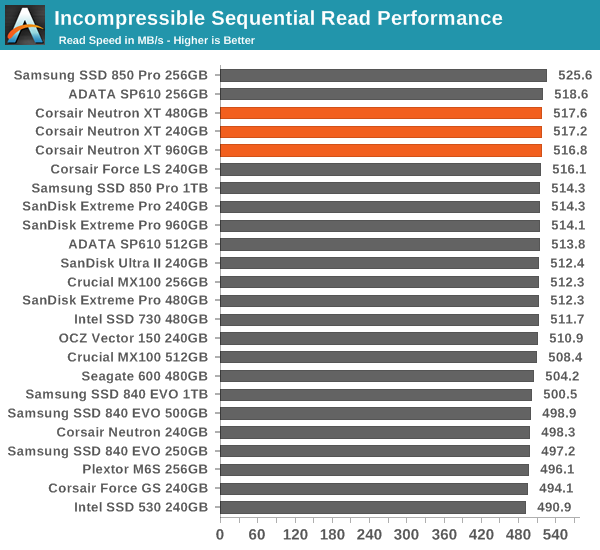
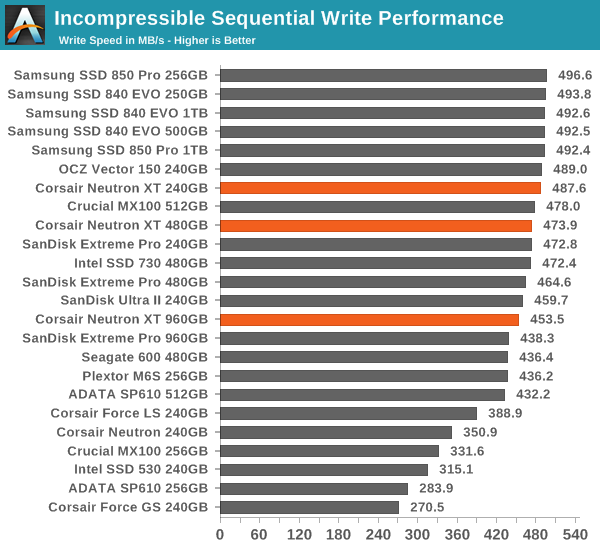










56 Comments
View All Comments
magnusmundus - Monday, November 17, 2014 - link
I think the SATA 3 SSD market is already saturated. Read/write speeds and IOPS are pretty much as good as they are going to get. The only thing left to do is increase capacity and reduce costs. Why not start releasing drives for the new SATA Express interface, or more M.2 form factor drives? Too small a Z97 market? I guess we'll have to wait another year or so.sweenish - Monday, November 17, 2014 - link
I personally vote for skipping m.2 altogether. Let's just move right on to the PCI-E drives.TinHat - Monday, November 17, 2014 - link
+1hrrmph - Monday, November 17, 2014 - link
I think you mean let's skip the M.2 drives that use the (slower) SATA protocol, and move right on to the M.2 drives that use the (faster) PCI-E protocol.Samus - Monday, November 17, 2014 - link
Right. I have a Samsung M.2 PCIE drive, and after finally getting it to boot on my H97 board (using a EFI boot manager partition on my SATA SSD to point to its windows installation) all I can tell you is 1100MB/sec is pretty insane. It loads BF4 maps so fast I'm always waiting on the server...Mikemk - Monday, November 17, 2014 - link
So you want to lose a GPU?shank15217 - Tuesday, November 18, 2014 - link
The protocol is called NVMe, a PCI-E drive doesn't mean much.r3loaded - Tuesday, November 18, 2014 - link
Actually both the legacy AHCI and the new NVMe protocols can be used on a PCIe-attached drive. The consumer Plextor M6e and Samsung XP941 use AHCI for compatibility reasons, while the new Intel server drives use NVMe for better performance in server workloads.Kristian Vättö - Monday, November 17, 2014 - link
Every single controller house is working on a PCIe controller for SATA Express and M.2, but the development takes time.warrenk81 - Monday, November 17, 2014 - link
honest question, not trying to be snarky, but how has apple been shipping PCIe SSDs for almost two years and no one else is?